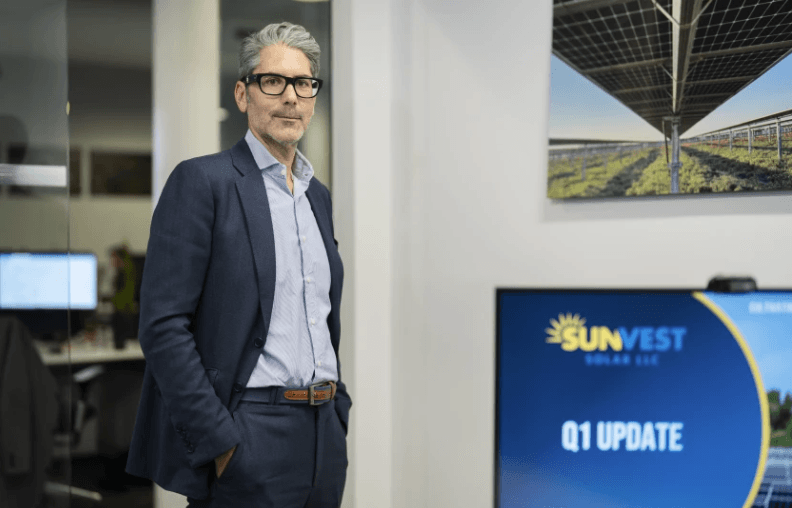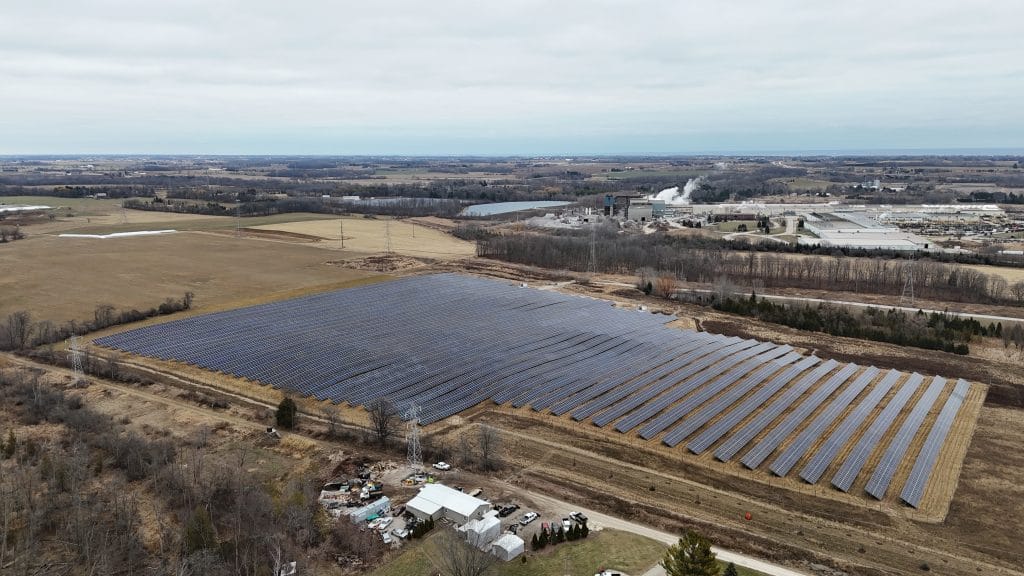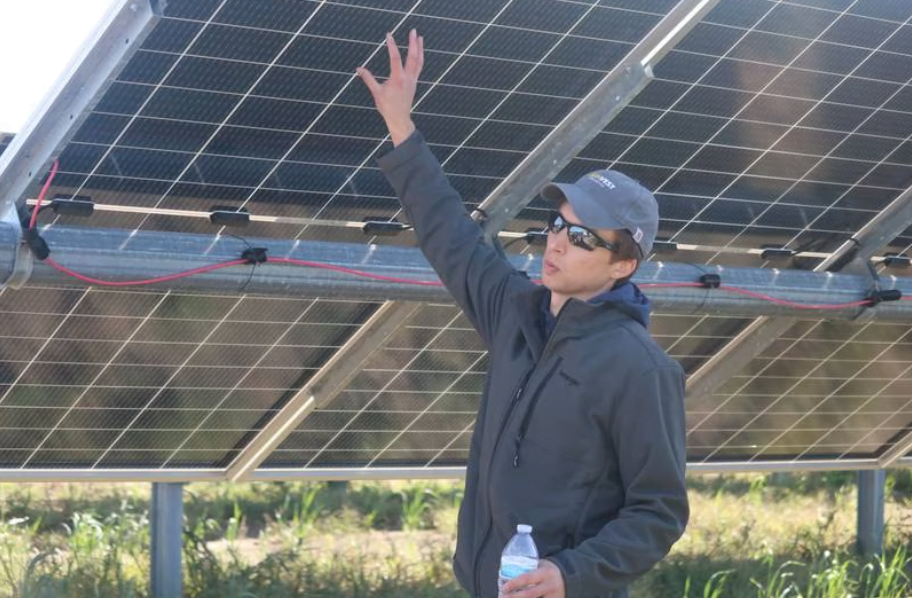PPAs Open Solar Doors
Powering your facility with solar energy doesn’t have to be a far-off, long-range goal.
This article originally appeared in Efficient Plant magazine.
Manufacturing and processing plants consume 25.9% of the national energy to bring products to market, more than twice as much for all U.S. residences. With the rapidly changing industrial landscape, particularly concerning energy costs, three-shift operations, and an influx of orders, the answer for your facility could be solar. The challenge is how to bring it online, given that there are many considerations for plugging into solar power. Power Purchase Agreements (PPAs) could be the answer to generating electric energy for many U.S. manufacturers.
With a large amount of production machinery, controls, and lighting, energy costs rank high on manufacturing facility budgets. Each square foot of a production floor annually consumes on average 95.1-KWh. Now that many manufacturing plants are back to their pre-pandemic business levels, the increasing demand will come with a rise in electric bills.
Another challenge of the recovery has been finding reliable, qualified employees, particularly in the areas of assembly and material handling. Though innovation will cover this labor, plants will need more power for robots, automatic-guided vehicles, and production equipment, along with the growing number of systems taking over some jobs.
Commercial and industrial building owners have high electricity use, expansive flat roofs, and a large building footprint. These factors result make it advantageous to add solar to your power menu.
The main benefit of solar power is the lower electric bill that results from generating your own electricity on site. A common barrier to entry, though, is the capital investment needed to install and maintain a solar array large enough to handle a building’s needs. Also daunting is not having the expertise to manage this kind of project. To overcome these obstacles, many building owners opt for a Power Purchase Agreement (PPA), which is a solar financing agreement with third-party developers.
Solar now
Operating a facility with solar power does not have to be a far-off, long-range goal. One of the benefits of PPAs is speeding up the deployment of these renewable projects by easing access to project finance. PPAs help commercial and industrial building owners enjoy the benefits of renewable energy without the upfront cost or long-term maintenance. For example, the owner of a manufacturing plant can plan electricity expenses in the future without upfront capital.
Many PPAs offer a fixed, flat rate over an agreed-upon period and include a rate escalator that generally mimics the price increases of electricity over time, typically 1% to 2% per year. This arrangement establishes the certainty of future electricity costs and a hedge against energy price volatility.
Manufacturers that have endured the massive price spikes of recent years will appreciate the value of power price stability. Buildings that make ideal PPA candidates have a roof area of at least 50,000 sq. ft., which could generate a minimum of 500 kW/yr.
Following are some PPA basics to consider:
- Third-party partnership: Full-service solar developers manage a solar array’s design, installation, operations, and maintenance. The PPA is a contract between the owner of the manufacturing facility (or long-term lessee) and the power producer (solar developer) to purchase electricity at pre-agreed prices for pre-agreed periods. Most PPAs last between 20 and 35 yr. The building owner provides the rooftop space or adjacent land and the developer owns the array. This relationship allows the building owner to avoid equipment ownership risks and complexity headaches.
- Your new electric bill: The building owner maintains the relationship with the utility company for its energy needs, especially when the sun provides less than the building’s energy demand. Dreary days or peak energy use do not cut off the facility from electricity and the facility operates through the night uninterrupted.
- PPA savings are immediate: The building owner pays the solar developer a predetermined cost per kWh for power generated, typically a 5% to 20% reduction of their current electricity bill’s volumetric rate, which are the fees that are multiplied by the monthly volume of electric power. Not only are utility bills lower, but this approach also gives the plant owner predictable electricity costs and price stability. Though the rates will increase slightly during the contract term, ratepayers who are not on PPAs will also be experiencing cost increases, which could be higher and more erratic.
- Installation details: The solar developer takes care of the extensive details when a PPA is in place, from determining the solar-array size and power-generation capacity, to meeting requirements for state or federal incentives, getting permits and approvals, and completing installation. The amount of offset a building can expect depends on the space available for solar panels and the annual electricity usage in the building. Once the array is installed, the solar developer connects the system to the local utility grid. Any excess power generated is sold back to the utility.
Anytime the building’s demand exceeds solar generation, it can pull power from the grid. In most markets, the building owner will only be charged for the net of generation it buys from the utility, plus some taxes and fees for maintaining grid infrastructure. State regulations and utility rules vary, but an experienced developer can help facility owners navigate those idiosyncrasies.
Life with solar
Once installed, the solar developer continues to operate and maintain the system. Work with a developer that offers a full suite of in-house operations and maintenance services, including remote monitoring and data analysis, and preventive and corrective maintenance, to ensure you receive the maximum benefit of a PPA. At the end of the contract, the customer may extend the term, purchase the system from the developer, or move the equipment from the property.
Given the scope of these projects and the importance of your operation, working with a solar developer with nationwide experience can deliver a system that can cover your needs in the future. A full-suite independent power producer (IPP) can offer design/build services, own and operate the project, and provide all the operations and maintenance needed.
The success of your solar solution will depend on the developer’s tools, including an understanding of local government policies and utility practices, the ability to overcome financial barriers, access to equipment with a 30- to 35-yr. lifespan, and a network of competent, vetted subcontractors. A well-thought-out PPA can provide your plant with reliable power generation, controlled electricity costs, and a great sustainability initiative. EP
Joe Gordon is Senior Project Developer for SunVest Solar LLC, Chicago, sunvest.com.



